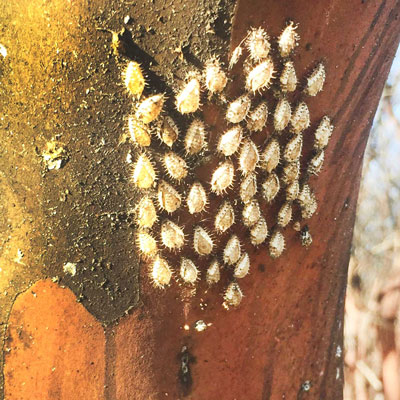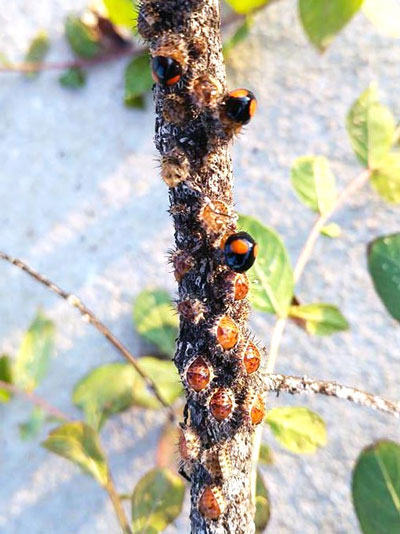Question of the Week – Number One: January 6, 2022

“What are these insects attached to the trunk of my crape myrtle? How should I get rid of them?
As you’re probably aware, ladybugs are beneficial insects. They feed on insects with piercing-sucking mouthparts, most commonly aphids.
In this case, these are a species with the somewhat frightening name of “twice-stabbed” ladybugs in their larval forms. Following December’s unusually warm weather I had several questions about clusters of them on the trunks of crape myrtles, just like this one you have shared.
Crape myrtle bark scales have become fairly common in the summers in parts of Texas. They’re not especially harmful to the crape myrtles, but they are ultra-unsightly when they feed on the plants’ sap and then exude sticky honeydew residue all over the plants’ stems and leaves. Black sooty mold fungus grows in the honeydew and makes the plants look very unattractive.

The solution to it all is to get rid of the scale insects in the first place, and these predatory ladybugs can help do that job for you. Left in place they will camp out on top of the scales and literally eat them alive like living vacuum cleaners.
Leave them in place to perform their magic the balance of this winter. See how things stand by mid-May. If you see any signs of the white scale insects starting to proliferate, and if the ladybugs have moved on to other parts of town, that’s the time to apply the soil drench Imidacloprid to get the systemic insecticide into the crape myrtles’ systems.
Now you know. That’s what these insects are, and that’s how they enter into the big picture of eliminating a really annoying pest of one of our favorite shrubs and small trees. Left to their own accord, they often accomplish the task all on their own. So do nothing to harm them.
